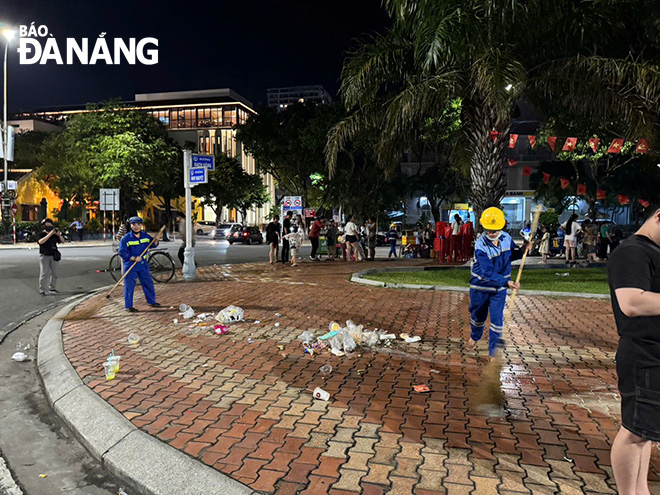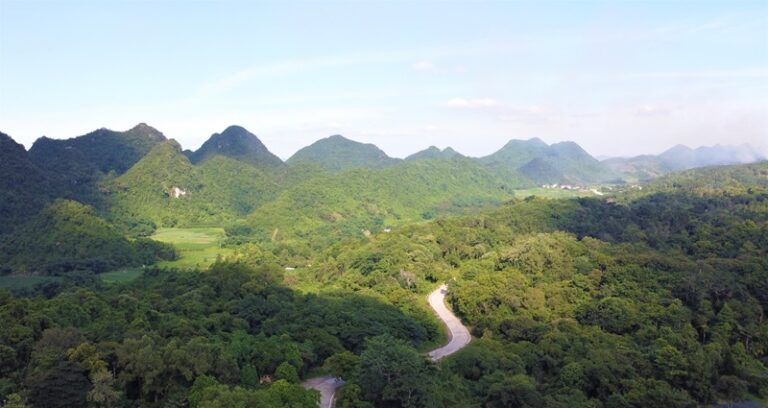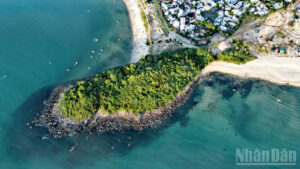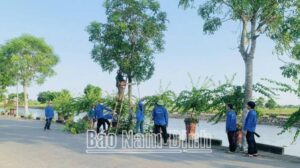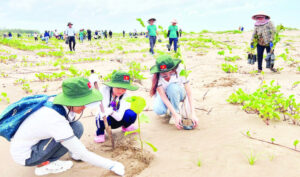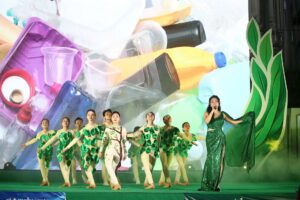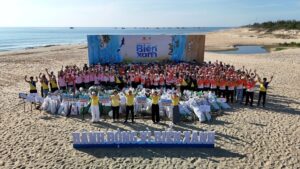With the advantage of having many flowery roads and many seasonal flowers blooming all year round, Hanoi possesses beautiful, romantic spaces that attract both locals and tourists.
Grasping this trend, Hanoi's tourism industry is directing localities and units to develop sustainable tourism products, including the one entitled “Hanoi - 12 floral seasons”.

The Caribbean Trumpet trees or Tabebuia aurea with yellow blossoms excite Hanoians in a spectacular display of color in late Spring yearly. Photo: Huy Pham
Embracing the trend
These days in late February and early March, when Hanoi streets put on a romantic coat of Hoa Ban (Orchid Tree flowers), Hoa Sua (Dalbergia Tonkinensis flowers), and Hoa Phong Linh (Yellow Tabebuia flowers), many locals and tourists come to these places for sightseeing and taking pictures. Some well-known streets are Hoang Dieu and Van Cao with Hoa Ban, Phan Chu Trinh, Phan Dinh Phung, and Hoang Hoa Tham with Hoa Sua and Hoa Ban...
Hoang Thi Huong, who lives in Ho Chi Minh City, said: “Spring has its very own beauty. Apart from chilly weather and sprinkles, Hanoi's charm also comes from beautiful flowery roads. So, my friends and I came to the capital to experience the romantic space with flowers.” Similarly, Ngo Kim Thuy from Me Tri Ward, Nam Tu Liem District, said: “Hanoi’s flowery streets are as beautiful as the cherry blossom scenes in Japan and South Korea. So, my friends and I spent time strolling around the streets and taking photos with flowers.”
Taking advantage of this trend, many localities of Hanoi have developed flower tourism products to attract tourists. A typical example is Ba Vi District, which has expanded its Hoa Da Quy (Mexican Sunflowers) cultivation area to 10 hectares, creating an experiential specialty for visitors every November and December. According to Chu Ngoc Quan, Deputy Director of Ba Vi National Park, the number of visitors to the national park is constantly increasing, especially in Hoa Da Quy season. In the peak tourist season in 2022, Ba Vi National Park welcomed 25,000 arrivals per month.
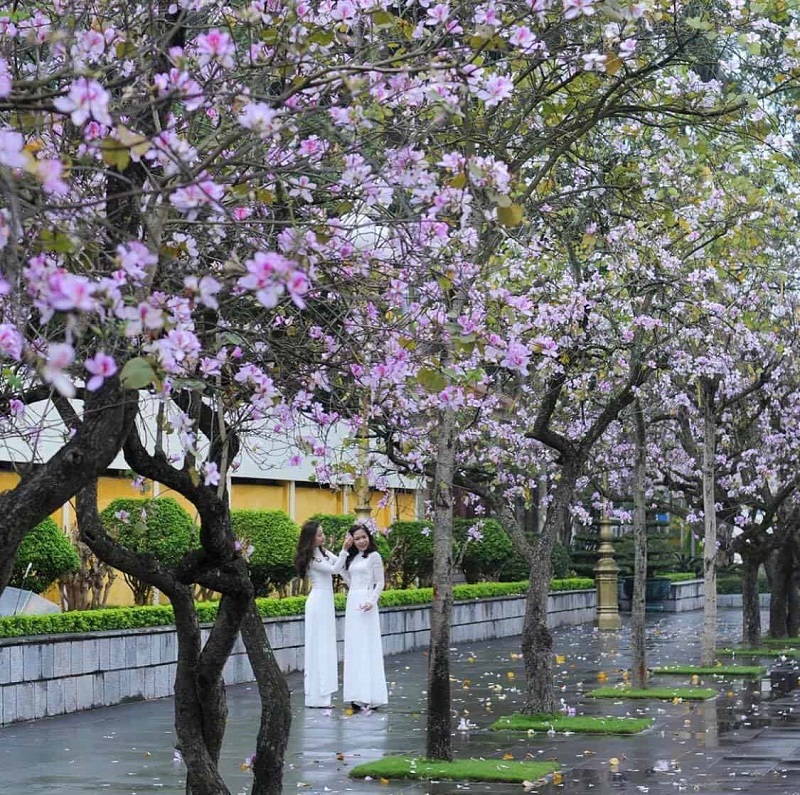
Photographing Ban Flowers in full bloom every spring is the joy of many young people in Hanoi. It can be easily seen the image of a girl wearing a charming ao dai (Vietnamese traditional dress) stands next to a Ban flower tree, trying to find ideas for posing. Photo: VnTrip
Likewise, in December 2022, Me Linh District held its first flower festival, showcasing rose varieties from the district's floriculture craft villages. This event received about 100,000 visitors.
As confirmed by Hoang Anh Tuan, Chairman of Me Linh District People's Committee, the festival will be held annually and is expected to become a unique cultural-tourism product of the district. Sharing the same idea, Mai Van Ngan, Vice Chairman of the People's Committee of Hong Van Commune, Thuong Tin District, noted the locality was developing various agri-tourism models with beautiful seasonal flower spaces, in order to offer new experiences to visitors.
In the past decades, flower-related tourist destinations have also been established in central Hanoi such as Nhat Tan flower village and West Lake flower valley - both in Tay Ho District, or the flower prairie in Long Bien District. These sites regularly receive large crowds of visitors, especially on weekends and holidays or in typical flower seasons. Along with that, many services have also thrived, generating significant income.
To become the capital’s tourism specialties
Despite its advantages, the city needs to have methodical strategies to turn flower tourism products into specialties. According to Phung Quang Thang, Chairman of the Hanoi Travel Association, in some countries such as South Korea, Japan or Russia, the seasons of flowers and changing leaves have become tourism brands that attract a lot of tourists.
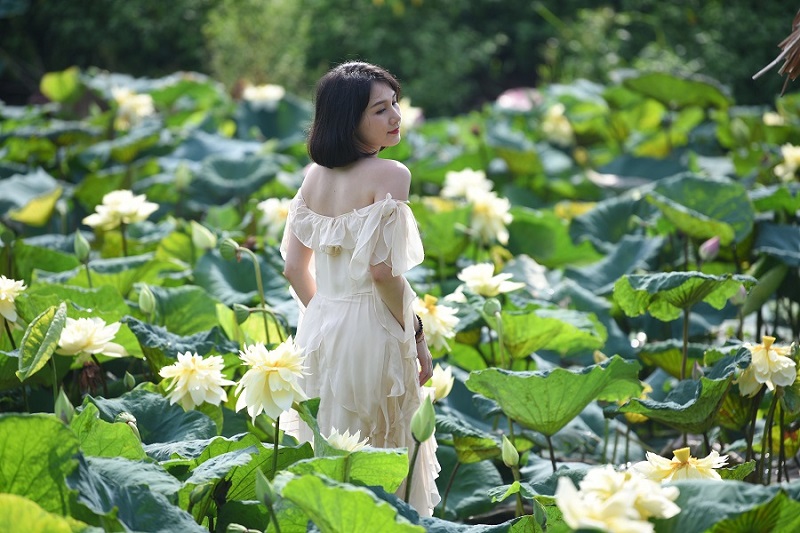
The lotus bloosom is a highlight of Hanoi tourism in summer. Photo: Khanh Huy
To create beautiful flower spaces, these countries all have zoned strategies for planting trees, as well as regulations and services for visitors to experience, admire and take pictures with flowers.
Meanwhile, flower tourism in Vietnam in general and in Hanoi in particular, remains seasonal; objectionable behaviors, such as visitors trespassing on public roads, picking flowers or breaking branches, still occur from time to time.
One of the problems in developing flower tourism products is the planning and management mechanism for enterprises to operate and build flower gardens, noted Vu Huong Lan, Deputy Dean of the Faculty of Tourism Studies, University of Social Sciences and Humanities, Vietnam National University, Hanoi.
Currently, there are many flower gardens operating spontaneously in the capital, which greatly affects the quality of services and products.
In order for flower tourism to become a unique and wonderful product of Hanoi, Phung said that Hanoi should continue to plant beautiful trees and flowers in public places - such as parks - so that the locals and tourists can get close and take pictures without disturbing the traffic.
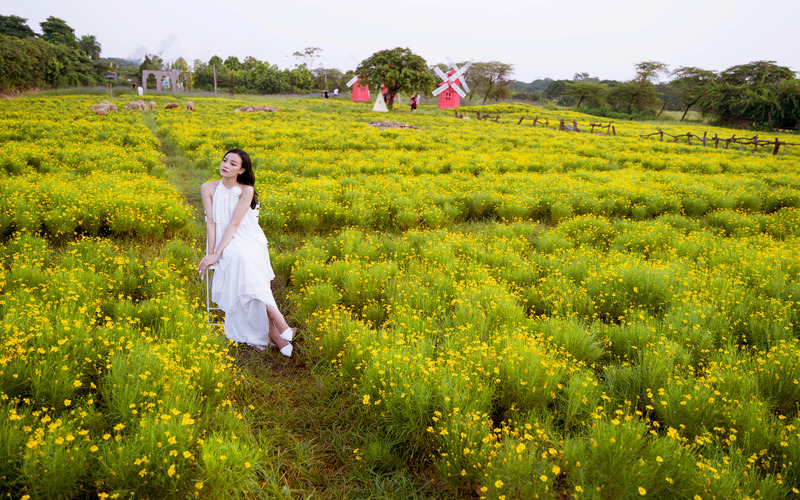
Thymophylla flower season captives Hanoian during its blooming season in autumn. These flowers are grown in Long Bien Flower Garden, Long Bien District.
Meanwhile, according to Le Hong Thai, Director of Hanoitourist Travel Company, authorities need to have a strategy and mechanism to develop flower-gardens to create destinations for tourists.
In the Hanoi Tourism Recovery and Development Plan 2023, the city emphasizes the development of new tourism products typical of Hanoi. Dang Huong Giang, Director of Hanoi Tourism Department, stated that the agency was directing sub-municipal entities to build sustainable tourism products, encouraging them to deploy the "Hanoi - 12 floral seasons" in localities in suitable places. Currently, the department is seeking the municipal approval of mechanisms and planning for the development of tourism products in each locality.
In the near future, the Hanoi Tourism Department will work with localities to develop various new product lines, taking advantage of the area along the Red River, where there are many flower gardens.
In addition, to further promote tourism in the capital, the department will organize a lot of activities and events, as well as encourage the creation of typical seasonal flower spaces of Hanoi for tourists, contributing to building Hanoi’s brand of flower tourism.
According to the Vietnam National Administration of Tourism (Ministry of Culture, Sports and Tourism), the number of international visitors has shown signs of improvement: in February 2023, the capital welcomed 933,000 arrivals, up 7.1% over the previous month. The total for the first two months of the year reached 1.8 million international visits, 36.6 times higher than the same period in 2022.
In February, the whole country received about seven million domestic visits, including 4.6 million were overnight stays. The total for the first two months reached 20 million arrivals. Domestic tourism is assessed to have high growth potential this year.
Jenna Duong


